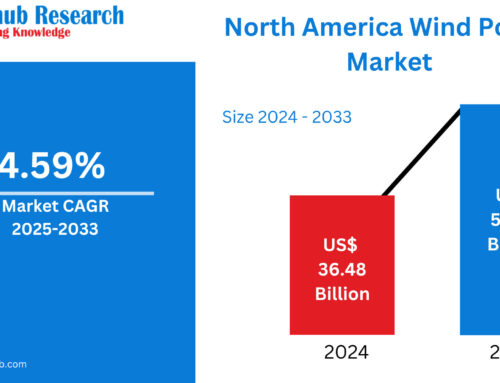Investment Expert: Is Your Retirement Portfolio Too Late to the Profit Party?
November 22, 2025
(Image credit: Getty Images)
For decades, the blueprint for retirement saving has been clear: build a diversified portfolio of publicly traded stocks and bonds, contribute consistently and let compound growth work its magic.
But what if a critical component of that growth has quietly moved outside the reach of most individual investors?
The investing landscape has fundamentally changed. The most transformative companies of today are no longer using the public market to fund their growth; they are using it as a final exit.
Sign up for Kiplinger’s Free Newsletters
Profit and prosper with the best of expert advice on investing, taxes, retirement, personal finance and more – straight to your e-mail.
Profit and prosper with the best of expert advice – straight to your e-mail.
Kiplinger’s Adviser Intel, formerly known as Building Wealth, is a curated network of trusted financial professionals who share expert insights on wealth building and preservation. Contributors, including fiduciary financial planners, wealth managers, CEOs and attorneys, provide actionable advice about retirement planning, estate planning, tax strategies and more. Experts are invited to contribute and do not pay to be included, so you can trust their advice is honest and valuable.
This shift means that by the time a company “goes public,” the hyper-growth phase that once fueled public market returns may already be over.
Andreessen’s research shows that there are fewer than five public tech companies expected to grow at over 30% in 2026. Meanwhile, there are hundreds of post-Series B private companies growing well in excess of 30%.
For long-term investors focused on building a nest egg, this raises a crucial question: Is your retirement portfolio missing out on the economy’s primary growth engine?
The growth curve has moved
The traditional IPO used to be the starting line for public investors to get in on the ground floor of “the next big thing.” Today, it’s often the finish line.
Companies are staying private for an average of 12 years, raising billions of dollars across multiple funding rounds. By the time they list on the NYSE or Nasdaq, they are often mature, multibillion-dollar enterprises.
The exponential value creation — the journey from $1 billion to $50 billion — is increasingly happening in the private market.
An analysis of the 2025 tech IPO class illustrates this starkly. For a company like Circle, a leading stablecoin provider, investors who participated in its 2021 Series E round saw returns of over 780%by late 2025.
In contrast, those who bought at the IPO price on June 5, 2025, saw a respectable 285%, while those who bought after the stock began tradingsaw 86% over the same period.
The public market returns were worse for other tech darlings that went public this year like Figma and Klarna.
The story is clear: The vast majority of returns are being captured before the opening bell rings.
A new ecosystem of innovation
While not without risk, the private market is no longer a niche, speculative playground. It’s a robust ecosystem where the economy’s future is being built.
Consider the strategic alliances being formed by Big Tech. Amazon (AMZN) has invested billions in AI leader Anthropic and partnered with fintech centacorn Stripe (a “centacorn” is a private startup company valued at more than $100 billion).
Google (GOOGL) also partners with Anthropic alongside strategic partnerships with Databricks and Commonwealth Fusion Systems. Microsoft (MSFT) and Nvidia (NVDA) are deeply integrated with a host of startups, from Databricks to OpenAI.
Looking for expert tips to grow and preserve your wealth? Sign up for Adviser Intel (formerly known as Building Wealth), our free, twice-weekly newsletter.
These tech giants aren’t just placing bets; they are building their future strategy around these private companies.
This activity acts as a powerful signal, validating the technology and market position of these late-stage leaders long before they are available in a public market brokerage account.
The growth gap in your retirement plan
This changing landscape requires a new approach to the modern retirement portfolio. If your 401(k) or IRA is composed entirely of public stocks and bonds, you are structurally excluded from this entire phase of value creation.
You are essentially waiting for a company to mature and go public before you start to invest.
This is an increasingly recognized gap. In fact, recent policy developments have begun to explore how defined-contribution plans, like 401(k)s, could appropriately include private market assets.
The goal is to allow long-term savers to access the same growth drivers that pensions and large endowments have used for years.
How long-term investors can participate
Luckily for accredited investors, the private market is not as inaccessible as it once was. A “secondary market” has emerged, creating a pathway for individuals to gain exposure.
In simple terms, the secondary market allows investors to purchase shares from a company’s existing, early-stage stakeholders, including founders, employees and early investors.
This provides a way to invest in established, late-stage private companies before a potential IPO or acquisition. This is often done through specialized funds or platforms like EquityZen (the company where I work) that curate and manage these investments.
Key considerations for your long-term strategy
Private market investments are not without unique risks. For any investor focused on retirement, there are a few key factors to consider.
Illiquidity. An investment in a private company is not like a public stock that you can sell tomorrow. You must be prepared to hold the investment for years, with no guarantee of when a “liquidity event” like an IPO or acquisition will happen.
This capital should be an appropriately sized, long-term portion of your portfolio that you do not need to access in the near-term. This is why the long-term investment horizon for retirement accounts is typically aligned with private market investments.
Investment risk. Not all late-stage companies become household names. While less risky than an early-stage investment, some of these companies will fail, and investments can lose value, potentially going to zero.
Valuation risk. Is the investment you’re considering fairly valued? That can be tough to determine because private companies typically provide less information than what is required of public companies.
Because of this, arming yourself with resources to research pre-IPO stock becomes important.
Because of this, diversification is key. Investing in a single private company is highly speculative. A more prudent approach, much like investing in a mutual fund instead of a single stock, is to diversify across multiple private companies to spread the risk.
The new modern portfolio
The fundamental rules of saving for retirement — patience, consistency and diversification — haven’t changed. But the playing field has.
A growth-seeking, diversified portfolio needs to look beyond just public assets. For long-term investors, understanding this shift is the first step toward ensuring your savings are positioned to capture growth and innovation where it increasingly occurs: the private market.
Diversification does not assure a profit or protect against market loss. Not all pre-IPO companies will go public or be acquired, and not all IPOs or acquisitions are or will become successful investments. This information is intended for reference only and does not constitute a recommendation or personal financial advice. Use of this information is at the user’s discretion and risk.
Related Content
TOPICS
Get Kiplinger Today newsletter — free
Profit and prosper with the best of Kiplinger’s advice on investing, taxes, retirement, personal finance and much more. Delivered daily. Enter your email in the box and click Sign Me Up.
Search
RECENT PRESS RELEASES
Toyota CEO goes full MAGA at Japanese NASCAR race, investing nearly $1B in US manufacturin
SWI Editorial Staff2025-11-22T05:28:52-08:00November 22, 2025|
Tom Lee Says Bitcoin, Ethereum Crash Wasn’t Macro But A ‘Software Bug’
SWI Editorial Staff2025-11-22T05:28:20-08:00November 22, 2025|
Ethereum Price Prediction: ETH Drops Below $3K as Traders Rotate Into DeepSnitch AI Presal
SWI Editorial Staff2025-11-22T05:27:52-08:00November 22, 2025|
Sanford celebrates launch of 28-megawatt solar farm
SWI Editorial Staff2025-11-22T04:22:58-08:00November 22, 2025|
Green Era’s food waste processor creates compost and renewable energy in Auburn Gresham
SWI Editorial Staff2025-11-22T04:22:39-08:00November 22, 2025|
Sanford celebrates launch of 28-megawatt solar farm
SWI Editorial Staff2025-11-22T04:22:39-08:00November 22, 2025|
Related Post



